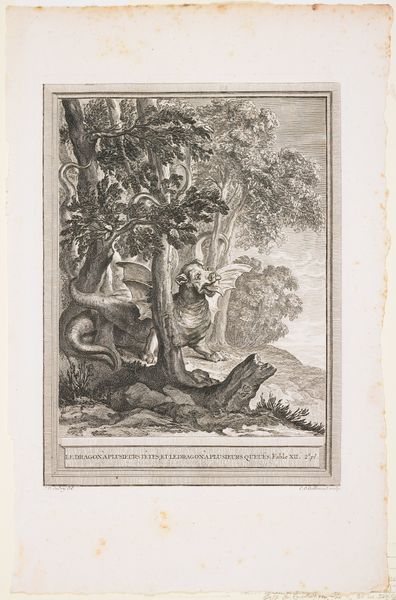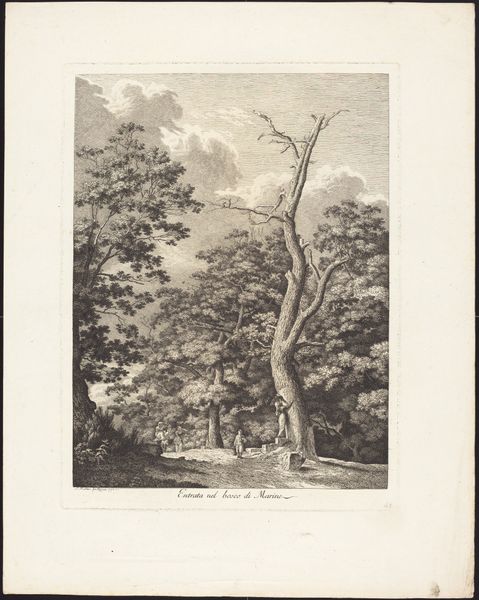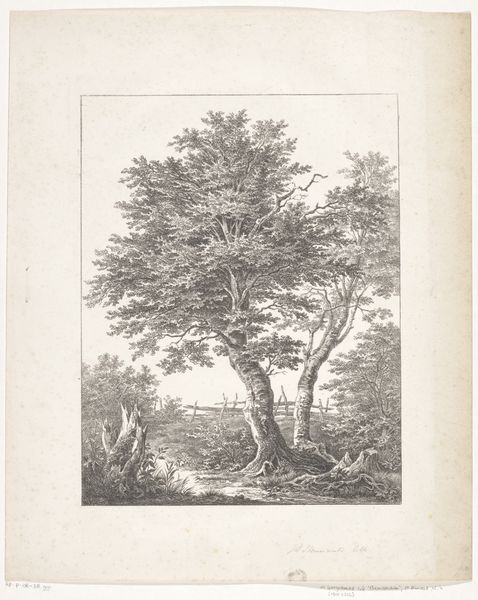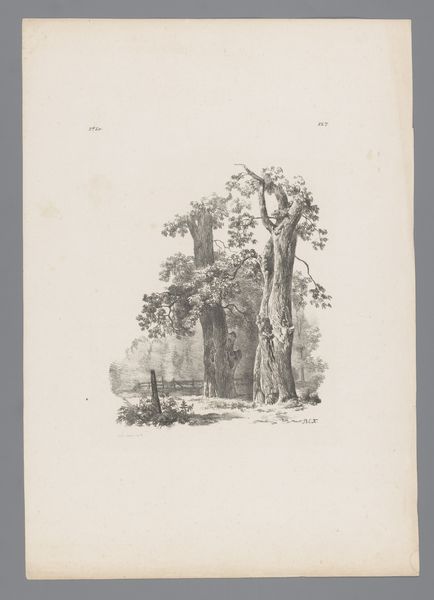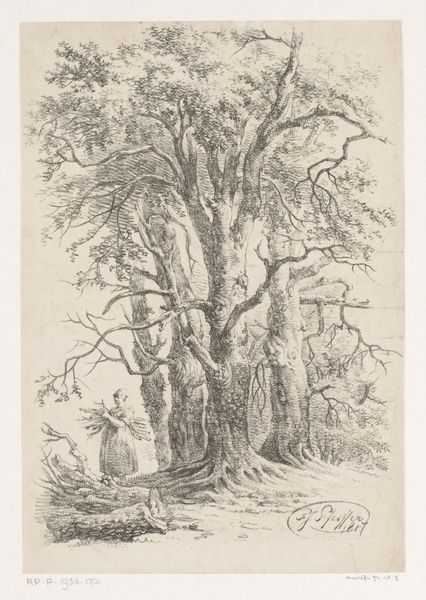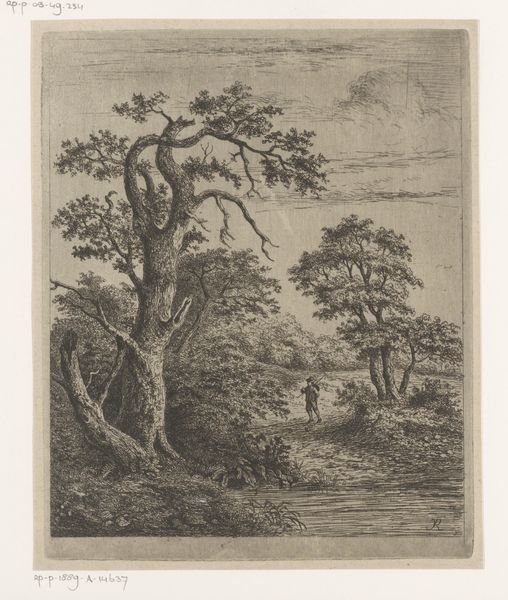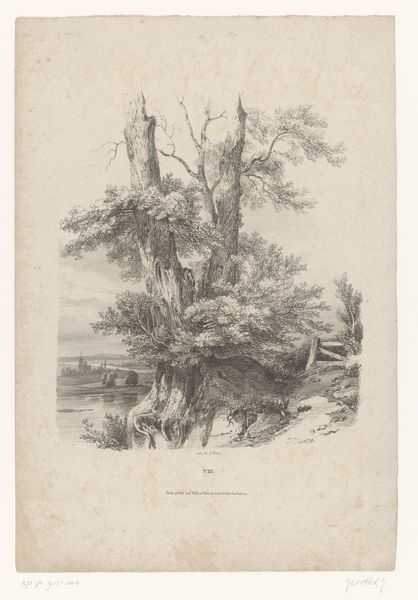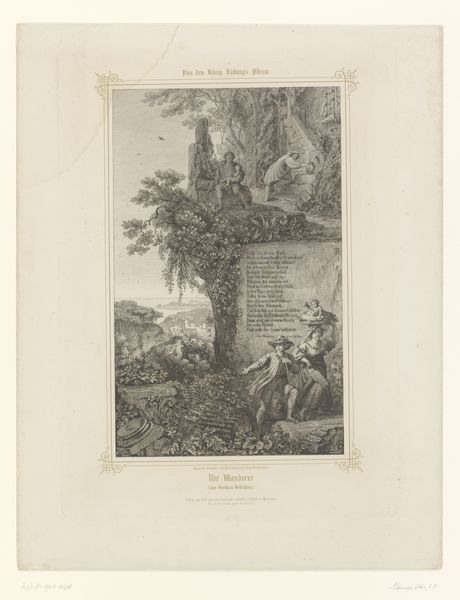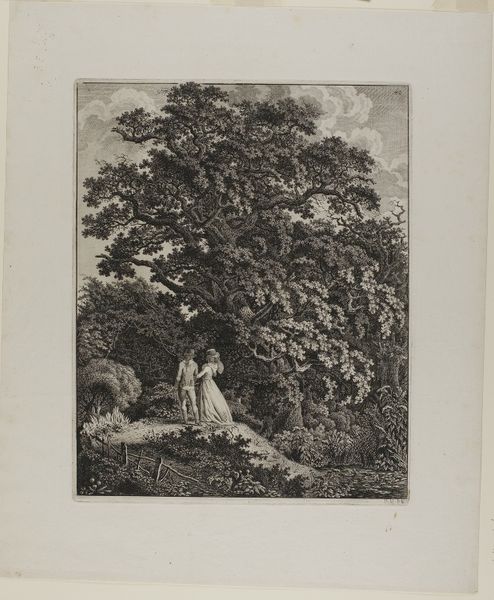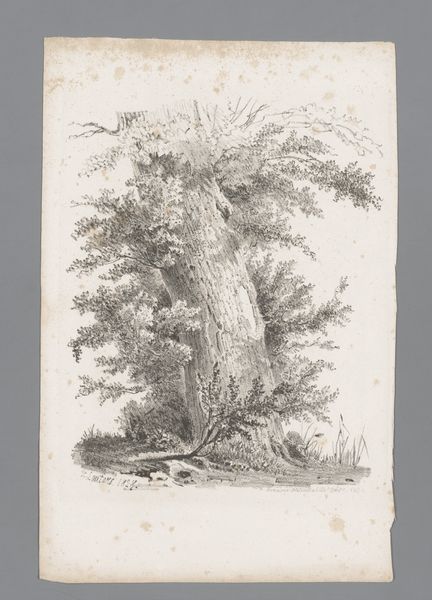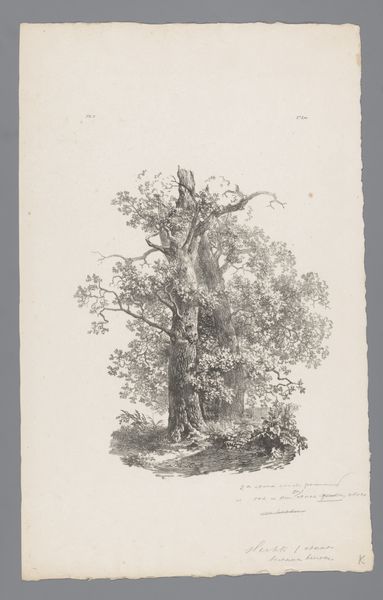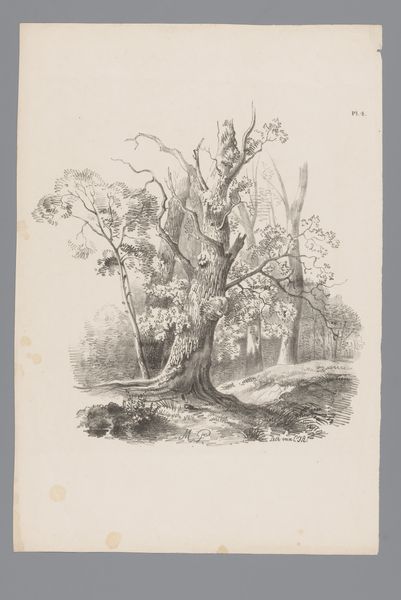
print, etching, engraving
#
fairy-painting
#
narrative-art
#
baroque
# print
#
etching
#
landscape
#
figuration
#
line
#
engraving
Dimensions: 12 1/16 x 8 15/16 in. (30.64 x 22.7 cm) (plate)16 1/2 x 10 3/8 in. (41.91 x 26.35 cm) (sheet)
Copyright: Public Domain
Here we see an anonymous print, titled "The Dragon of Many Heads," made using etching. This intaglio technique involves using acid to bite lines into a metal plate, which is then inked and pressed onto paper. The dense hatching and cross-hatching create a rich tonal range, giving depth to the forest scene and a sense of the dragon's fearsome presence. The acid's bite renders the fine details of the foliage and the grotesque features of the dragon's heads and tails. Printmaking was a key technology in early modern Europe, and the division of labor inherent in the process allowed for the wide dissemination of images and ideas. Etching, in particular, allowed for relatively quick production compared to engraving, making it a popular choice for book illustrations and satirical prints. Consider the skilled labor involved in creating the original plate, and the subsequent production of multiple impressions. This reproductive capacity democratized access to imagery, playing a significant role in shaping public opinion and cultural discourse. By valuing the materiality and mode of production, we can appreciate the broader social impact of this seemingly simple print.
Comments
minneapolisinstituteofart almost 2 years ago
⋮
When a guard boasted to a visiting envoy that his prince ruled over men who kept armies at their own expense, the envoy replied with an account of being attacked by a fearsome many-headed dragon only to see the beast rendered powerless as it became entangled in the woods. He went on to say that another dragon soon arrived, now with one head and many tales. This dragon could swiftly navigate the hedge-head, body, and tails an unstoppable wedge. The envoy commented to the boastful guard that the first dragon was the prince's force, and the second one, the envoy's.
Join the conversation
Join millions of artists and users on Artera today and experience the ultimate creative platform.
